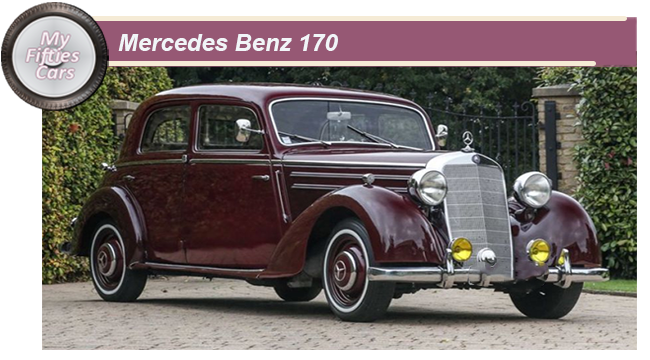 At the end of World War II, the once magnificent city of Stuttgart stood in ruins as a result of incessant Allied bombing.
At the end of World War II, the once magnificent city of Stuttgart stood in ruins as a result of incessant Allied bombing.
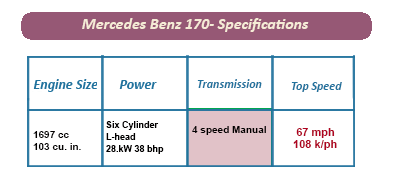 Among the Allied Air Force's principal targets was the Daimler-Benz factory, which was almost entirely reduced to rubble.
Despite that, by February of 1946, the design team at Mercedes-Benz had succeeded in putting together a handmade prototype of the 170V sedan which, even more, remarkable was ready for production in June of that year.
Among the Allied Air Force's principal targets was the Daimler-Benz factory, which was almost entirely reduced to rubble.
Despite that, by February of 1946, the design team at Mercedes-Benz had succeeded in putting together a handmade prototype of the 170V sedan which, even more, remarkable was ready for production in June of that year.
 The first postwar 170V four-door sedan had a distinct prewar look with front-hinged rear doors and rear-hinged ("suicide" style) front doors.
A particularly outstanding design feature on the Mercedes Benz 170s was its dominant headlamps and flat one-piece windshield.
For the 170, the traditional upright grille was angled further back than the pre-war designs, with the Mercedes Tri-Star emblem still sitting proudly on top.
The first postwar 170V four-door sedan had a distinct prewar look with front-hinged rear doors and rear-hinged ("suicide" style) front doors.
A particularly outstanding design feature on the Mercedes Benz 170s was its dominant headlamps and flat one-piece windshield.
For the 170, the traditional upright grille was angled further back than the pre-war designs, with the Mercedes Tri-Star emblem still sitting proudly on top.
![]()
The first 170s were notoriously underpowered, driven by a tiny 697-cc L-head engine capable of generating just 38 bhp, generating a top speed of around 65 mph (110 k/ph).
Despite its lack of power, due to a general shortage of new cars in West Germany, the 170 was in steady demand.
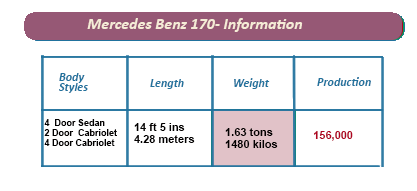 Sales reached a new level in 1949, with the almost simultaneous release of a diesel-engined version of the 170, followed by a more luxurious 170S edition fitted with a more substantial 1767-cc engine that could develop 52 horsepower, and was much faster.
Sales reached a new level in 1949, with the almost simultaneous release of a diesel-engined version of the 170, followed by a more luxurious 170S edition fitted with a more substantial 1767-cc engine that could develop 52 horsepower, and was much faster.
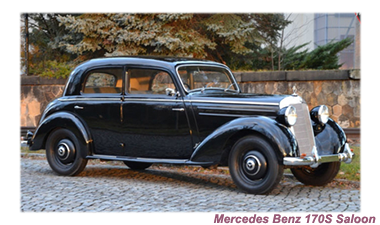 Another welcome advancement that came in 1950 was the release of the 170S sport version, available in either cabriolet or sedan form.
Another welcome advancement that came in 1950 was the release of the 170S sport version, available in either cabriolet or sedan form.
Production of the 170Vs and 170S sedans continued into the early 1950s, with various technical changes.
Early in 1952, to improve driver comfort, the 1705 began to be fitted with a column-mounted gearshift in place of the cumbersome floor change previously available.
 During that same year, the 170V added transverse vent slots in its hood.
During that same year, the 170V added transverse vent slots in its hood.
By 1952, Mercedes-Benz released an improved 170Sb version of the 170S with hypoid rear axle, dashboard-mounted starter button, wider track, and a wholly revamped heater, a major feature to cope with the freezing winters in West Germany.
![]()
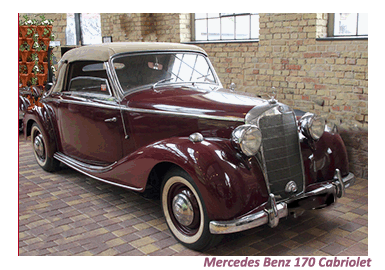
 Although it could be described as little more than a "workhorse” and a slightly unattractive one at that, the 170 played a significant part in the Mercedes-Benz's history, helping the company to get rapidly back on their feet after the ravages of the Second World War.
With its traditional, boxy shape the 170 set the design standard for the entry-level Mercedes sedans going through the Fifties and onwards for years to come.
Although it could be described as little more than a "workhorse” and a slightly unattractive one at that, the 170 played a significant part in the Mercedes-Benz's history, helping the company to get rapidly back on their feet after the ravages of the Second World War.
With its traditional, boxy shape the 170 set the design standard for the entry-level Mercedes sedans going through the Fifties and onwards for years to come.
Take me back to the Home Page
EU6


